Antique lamps, also known as vintage lamps, are a stylish and very useful addition to any home. They have been produced and refined for more than a century in a variety of fascinating and ornate designs. Genuine antique floor lamps can sell for a lot at auction and look great in a sitting room decorated in a retro theme.
The beauty of an antique lamp is unmatched. Any room they are in can be transformed by their timeless appearance.
These plain, elaborate lamps can bring in a sizable sum at auction and are desired by both antique collectors and interior decorators. So, if you have an ancient lamp on your desk, you might want to look at it more closely.
Here, in this article we’ll provide you guidelines on how to identify different antique lamps, how to value antique lamps and much more.
Table of Contents
What Is an Antique Lamp?
First, there is a matter that needs to be resolved right away. These days, we frequently combine vintage and antique items. But when it comes to lighting, we must distinguish between the two. Antique lamps date back more than a century and the Vintage lamps which are less than 100 years old yet more than 20 years old.
Antique lamps can be as old as the seventeenth century. They come in a plethora of various sizes, shapes, colors, textures, and fuel types. Vintage lamps frequently just use electricity and have more contemporary designs.
How to Identify Antique Lamps?
To start, it should be understood that antique lamps are officially any that date back more than a century while a vintage lamp is one that has about 20 and 100 decades on it.
Even though there aren’t many resources available for identifying antique lamps, looking for old catalog images, lamp guides, and lamp encyclopedias can be a helpful place to begin. In your hunt to identify a lamp, you may also look through historical museum photos or specialized exhibitions. You might be able to determine a rough date and potential manufacturer by comparing your light to the photographs you come across. Searching for these resources in libraries can be beneficial.
You can also follow a few additional quick ways to figure out where your lamp originated from.
Manufacturer Stamp or Mark
Keep a close eye out for any form of manufacturer’s mark. Words, letters, numbers, logos, or a combination of these could be used. On a label, the lighting fixture, or even incorporated someplace in the lamp’s base, you might find a stamp or trademark. However, if there is a maker’s mark on the lampshade, be cautious because these are frequently changed out over time.
If you are able to locate a mark, try searching for it online to learn more about the light. Several well-known brands to keep an eye out for are:
Handel Company
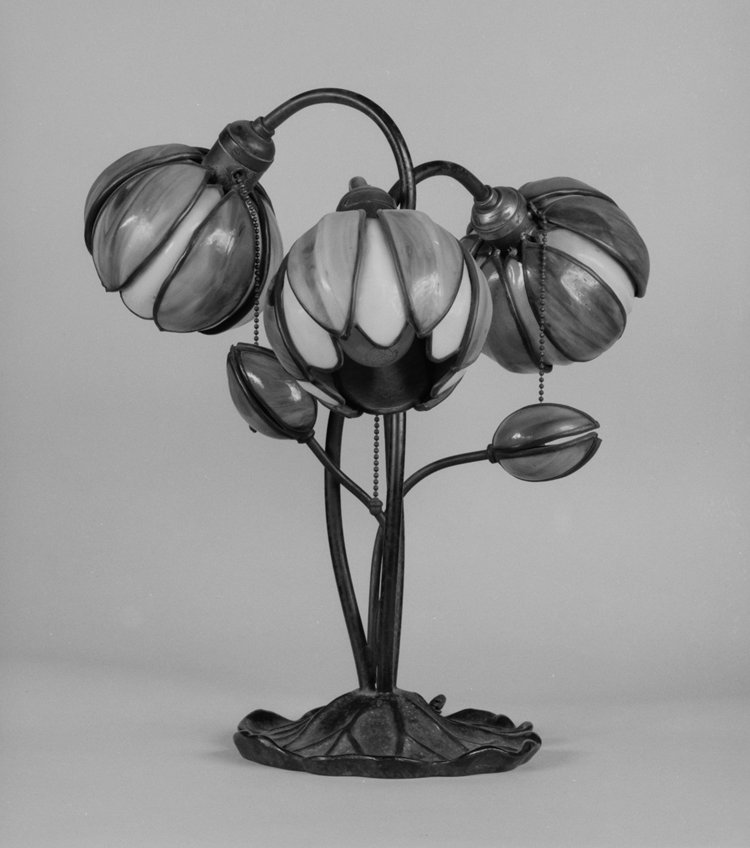
Duffner and Kimberly
Fulper
Dirk Van Erp Studio
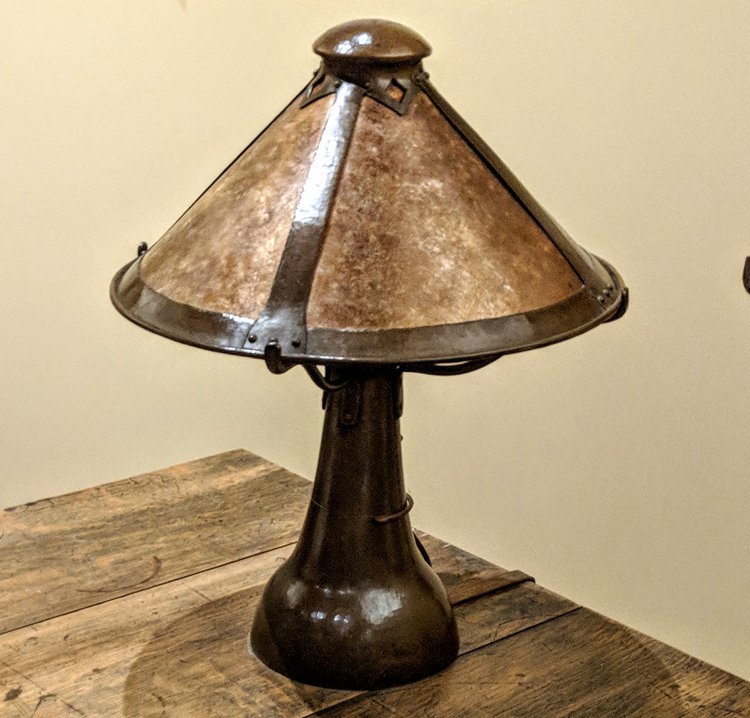
Edward Miller and Company
Tiffany Studios
Roycroft
Features
There are many lamps that have decorative elements and identifying design elements. Be on the lookout for finials or designs on bases fashioned from rare and expensive materials, such as valuable stones like jade, pink gemstone, and rose quartz, or unusual materials like bone and cinnabar.
Style
The design of lamps can vary greatly, and some manufacturers have created lamps with a wide range of functions. However, in addition to the ordinary type of shade you can see, there are a different categories of lamps to watch out for:
Bridge Arm Lamps
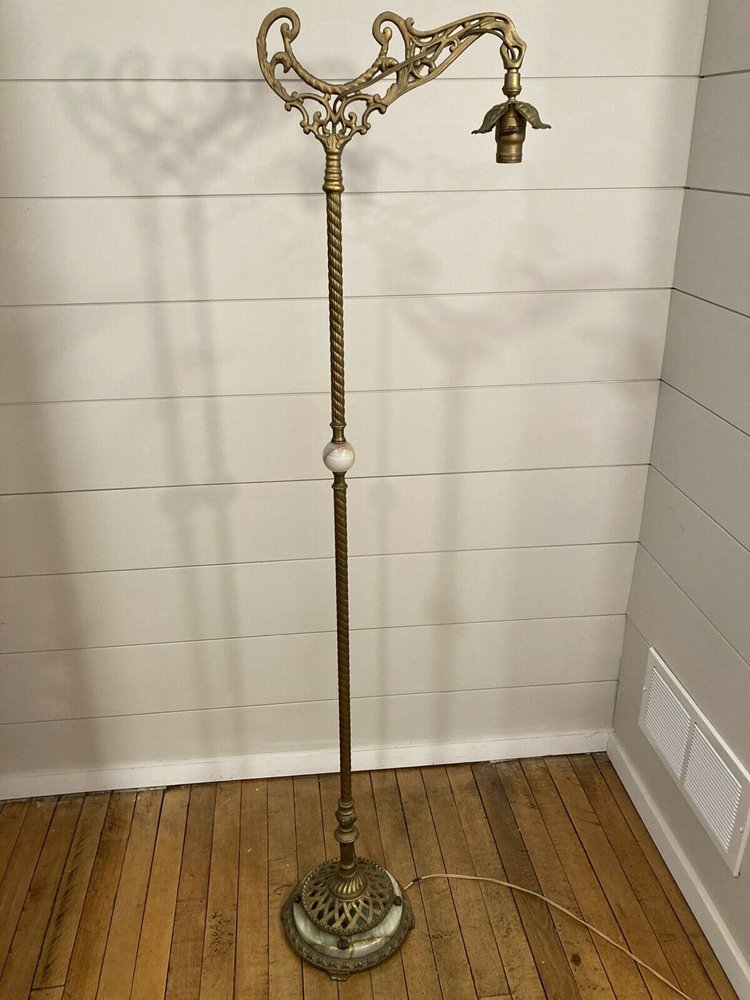
The downward-shining angle of the lamp shade distinguishes these exquisite lights, commonly referred to as bridge lamps. This offers a direct source of light, making it ideal for hobbies like studying or manufacturing.
Shades
Bell (they are typically white in hue and coated in silk fabric. Fringed (formalized shades with obvious seams and drooping tassels), bell-shaped (they flare out at the base like a bell), mica (this is actually a mineral substance that creates a dappled light effect), and highly structured (they have apparent seams and fringe). The majority of mica colorations are either amber-colored or, less frequently, span from light olive to ivory.
Diffuser Lamps
Contrary to bridge arm lights, diffuser lamps attempt to illuminate a vast area while shining upwards onto the ceiling. They radiate light from a distinctive glass bowl. A three-light candelabra is one of the most prevalent and well-liked types of diffuser lamps.
Shades
Mica, bell, and fringe are the shades. Contrary to bridge arm fringe shades, fringe shades are typically less pronouncedly pleated and more tapered.
Torchiere Lamps
The French word “torchiere,” which means “flaming torch,” was given to this style. Despite having exposed lightbulbs that are intended to simulate living flames, it also intends to indirectly illuminate the entire room.
Shades
These are usually funnel and bowl-shaped. Torchiere shades are often constructed of glass and come in white or cream colors.
Fuel or Oil Design
An antique lamp’s fuel design is one of its distinguishing features.
- Early lamps– the fuel source for these lamps was kerosene or paraffin oil. To contain liquids and catch spills, they had chambers. Due to their antiquated design, these lamps are undeniably old.
- Electric lamps– Because they frequently resemble current lamps, it might be challenging to distinguish between antique and modern electric lighting.
Typically, electric lamps date from the 1860s and after. Batteries weren’t widely used until much later since they were initially quite pricey. The cable and the plug are the two primary components to look at to determine whether your lamp is an antique – 100 years old, vintage – more than 20 years old, or a modern replica.
Lamp Plug
Your lamp’s plug’s condition and style might also help you figure out when it was made. Modern lamps have one larger prong while older lamps frequently have two prongs of the same size.
Plugs can be updated entirely, restored partially, or fixed. If in doubt, consult reference materials or images of lamps with similar models.
Because lamp manufacturers and designs tended to remain fairly constant across time, it is simpler to identify changes in antiques.
Lamp Cord
There are a few strategies to date an antique electric lamp as well. Start by looking at the cord. Antique lamps frequently have studs and visible connections where the cord joins.
Lamp makers used cables and prongs that were of the same size and covered in cotton before the early 20th century. It’s important to note that cords are commonly replaced or mended when a lamp has to be fixed or replaced. Due to the misconception that visible wires are defective, many people unintentionally conceal them.
Antique Forums for Lamps Identification
There are several helpful antiques forums online where both professionals and amateur lovers enjoy exchanging antiques and offering one another assistance in identifying their valuables. Try:
Identifying Different Types of Antique Lamps
There are numerous different kinds of lamps, and classifying them is a very helpful technique to determine their net value.
Some appear extraordinarily ancient and historic, while others can appear much younger than they actually are. Let’s quickly review some of the most popular Antique lamps available in the market:
Early Antique Lamps
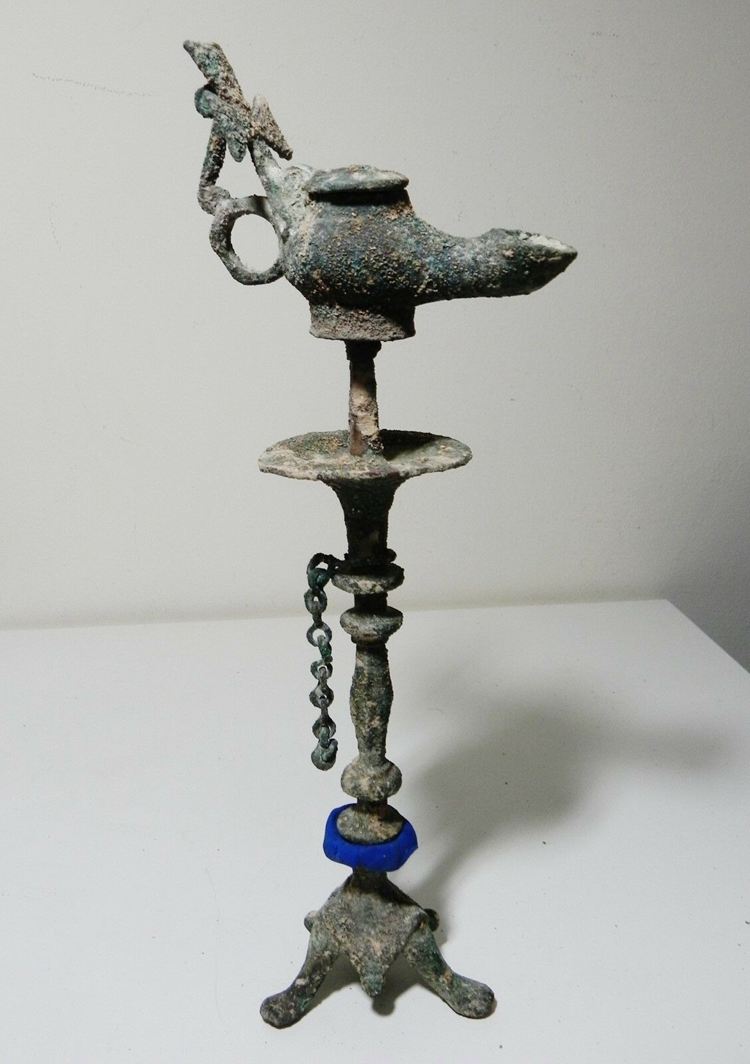
If you’re looking for antique lamps, you’ll want to find something with an oil filter and a wick that can regulate how swiftly the lamp burns. These lamps were used from the Bronze and Iron Ages up until the Greek period in the sixth century B.C. They were typically constructed out of clay and molded by hand.
Molds were first used from the Greek era to the Middle Ages. Beginning in the first century AD, metal materials were incorporated into the design of lamps. Early models were simple, but as time went on, they became more complex.
Middle Ages to the Eighteenth Century
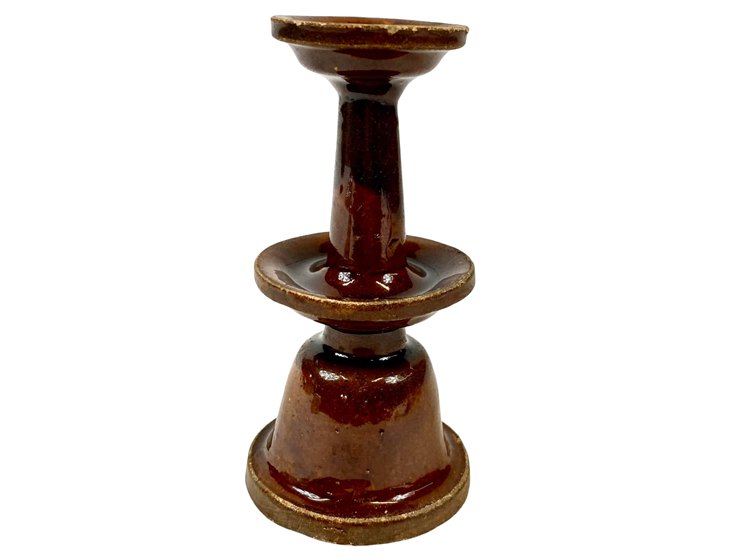
Advanced lamp designs emerged at this time. As glass was utilized to block flames and lower the risk of fire, glass blowing was developed, and safety precautions were implemented. Ceramic was being replaced more frequently by metal.
Here are a few lamps that gained popularity at this time:
-
Cruise lamps
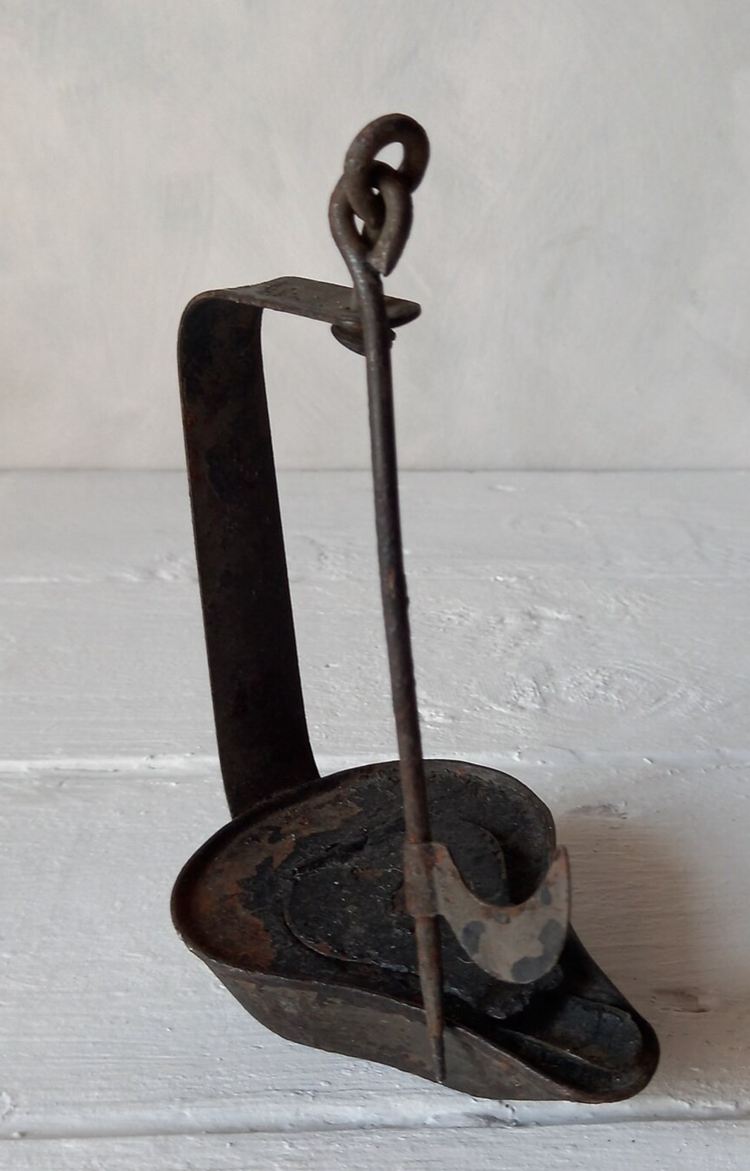
One of the very earliest types of lighting made were cruise lamps. Cruise lamps were created in the 1600s to provide light through a small bowl-shaped container that serves as both the oil’s storage space and a path for the wick’s burning.
-
Betty Lamp
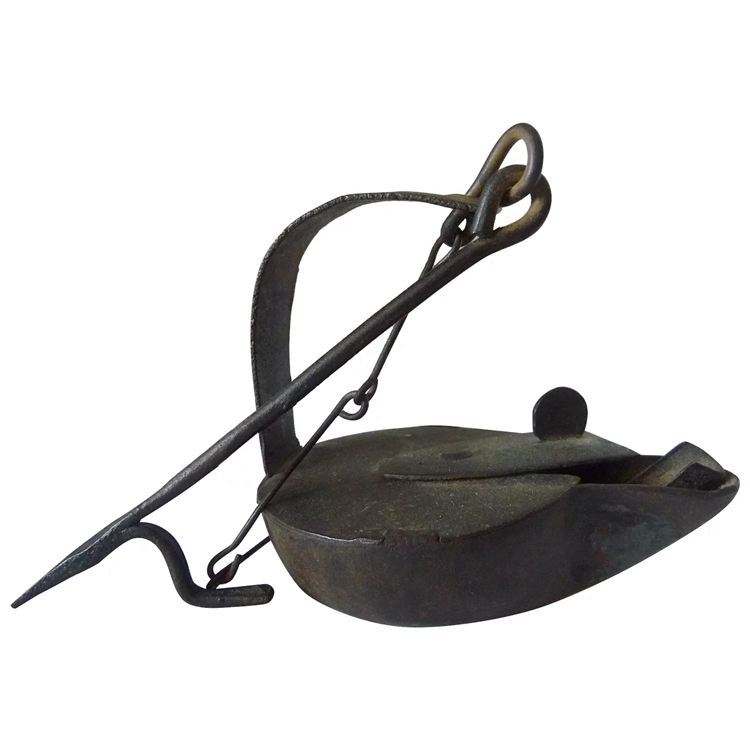
A better lamp design that enabled the oil wick to drop back into the reservoir was developed with the invention of the Betty Lamp in the 1700s. This contributed to even less oil being wasted.
Central Draft Lamp
The central draft lamp, which was created in 1780, employed a cylindrical wick and chimney to increase airflow and brighten the light. Additionally, it contained a mechanism that let the user regulate how hot the wick burnt.
The Central Draft lamp was created by Aime Argand in 1780. It used a cylindrical wick and chimney to enhance flow of air around the bulb, increasing the brightness of the light. One of the Central Draft lamp’s design’s groundbreaking elements was the inclusion of a mechanism that made it simple for users to raise and lower the wick to alter how much or how little it burned. The most renowned manufacturers of these lamps were Rayo, Aladdin and Coleman.
Lamps in 1800’s
Gas and kerosene were introduced to lamps in the 1800s, modernizing them. Here are a few examples of lamps from this time period:
Student Lamp or Kerosene Lamp
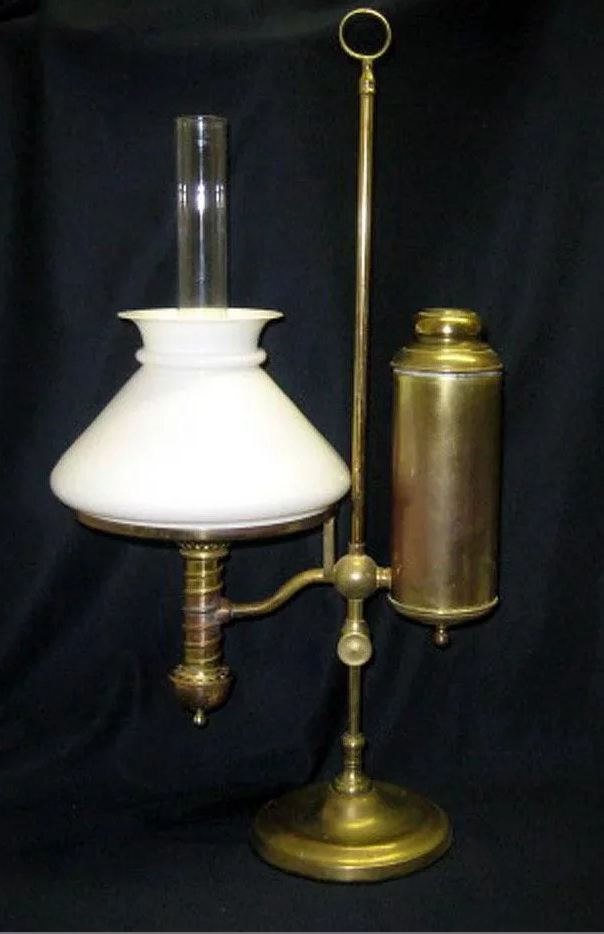
Student Lamp, sometimes known as “the Kerosene Lamp,” were created for the first time in the 1890s. The swing arm on these kerosene lamps gave the best lighting for reading. A kerosene reservoir that was outside the lamp itself was responsible for achieving this.
The cost of kerosene lamps varies. as an illustration
- Brass kerosene lamp 1857, worth $37.
- Chimney clear kerosene lamp costs for $39.99.
Banquet Lamps
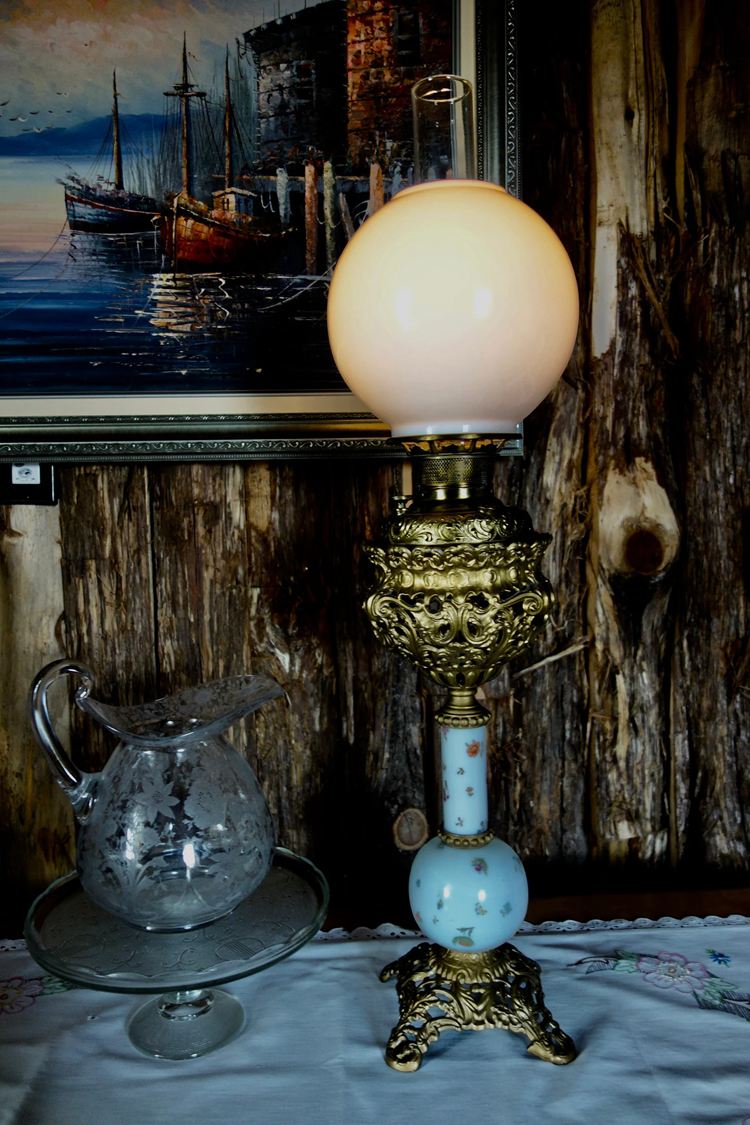
Banquet lamps, which had a top and a bottom globe, were a recurring motif in the film Lost with the Breeze. Their ornamental stem, “vase” shape, and detachable fount make them distinctive. the following values:
- Priced at $446 is this pink Bristol banquet lamp.
- The cost of this 1890s banquet lampis $850.
- The cost of this 1860s Boston sandwich banquet lamp is $16,985.
Tiffany Lamp
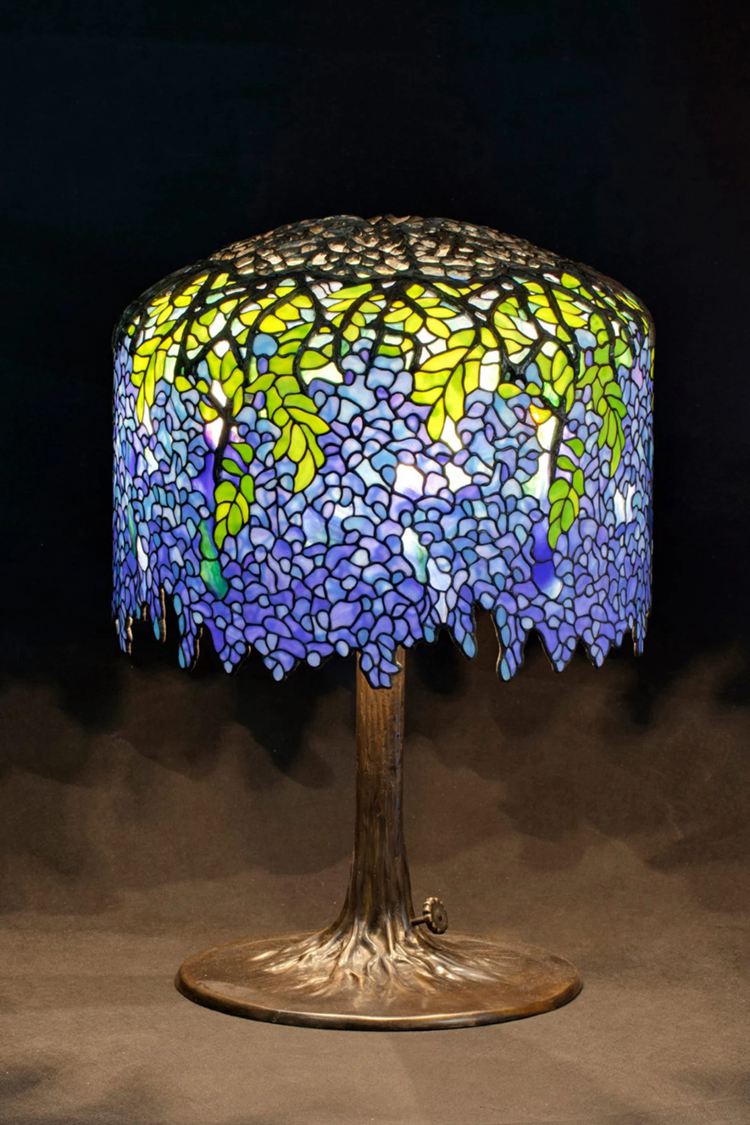
Tiffany created stained glass shades for its lamps using tiny shards of broken glass from stained glass windows. They started being made in 1876 and continued to be sold until 1933. Since the studio has shut down, their scarcity and exorbitant cost have increased.
A number of antique lamps from the 1900s are also present. These are electrically powered and have a high potential value. By researching manufacturers, checking for maker’s marks, and spotting specific design features, you can identify whether the lamp is antique.
A Tiffany lamp is instantly identifiable thanks to its distinctive stained-glass shade. The majority of lamps were made before 1900.
Value is influenced by both the shade’s quality and design. Examples comprise:
- The cost of Watercolor Tiffany lamp is $325.
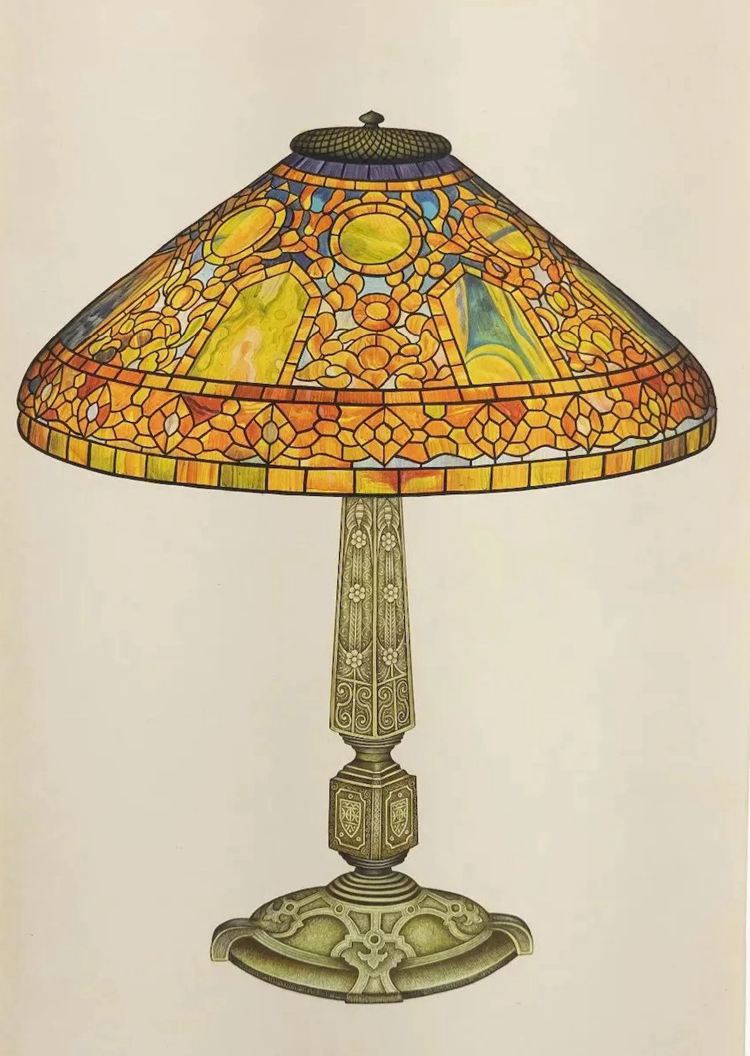
- Green and blue Tiffany glass lamp costs for $4,635
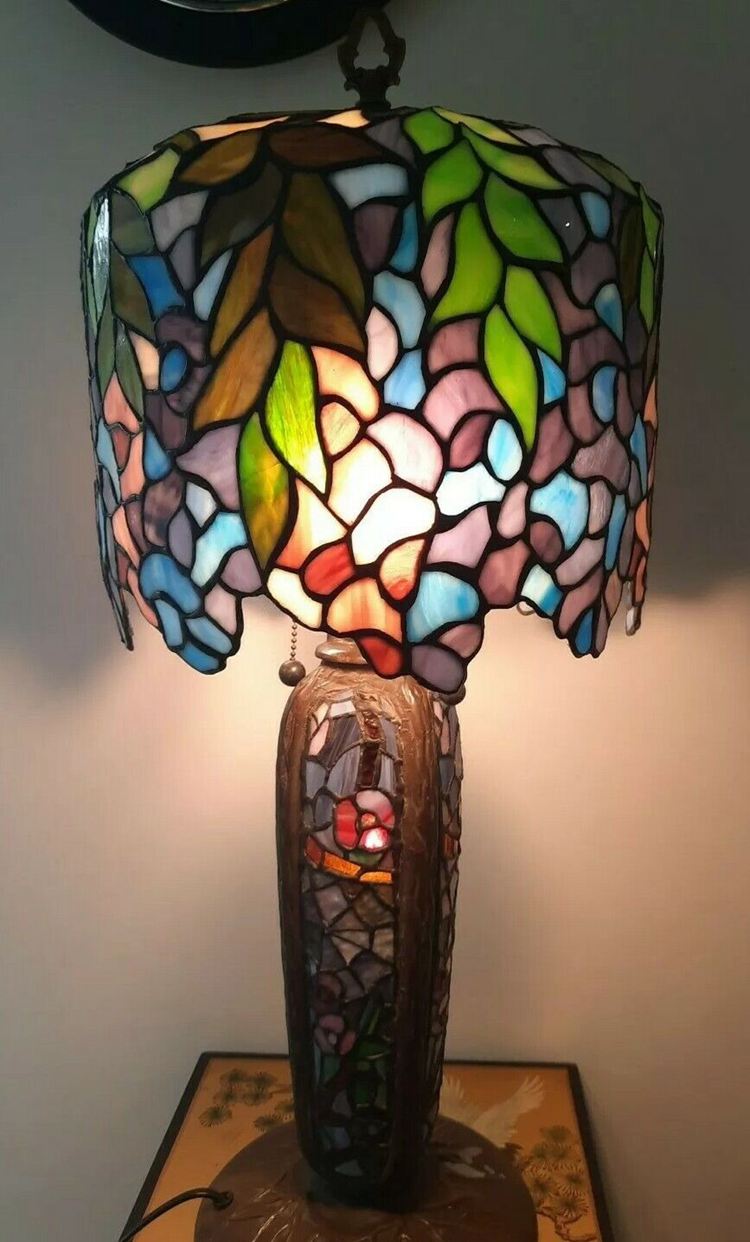
- 1910 Tiffany lampcosts for $145,000.
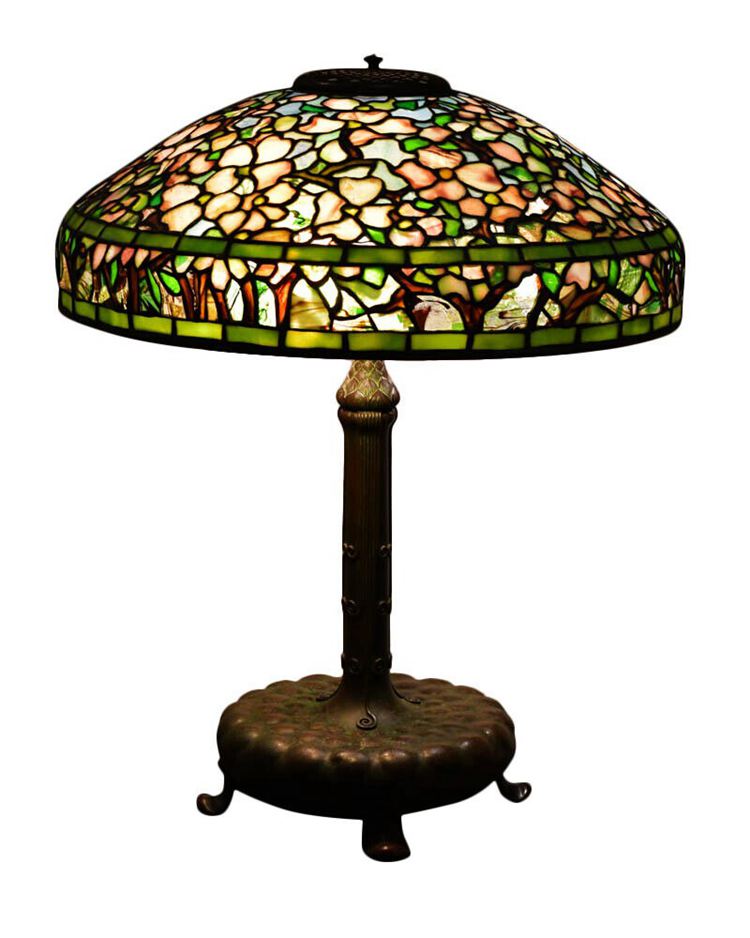
Other Antiques Lamps
Argand Lamps
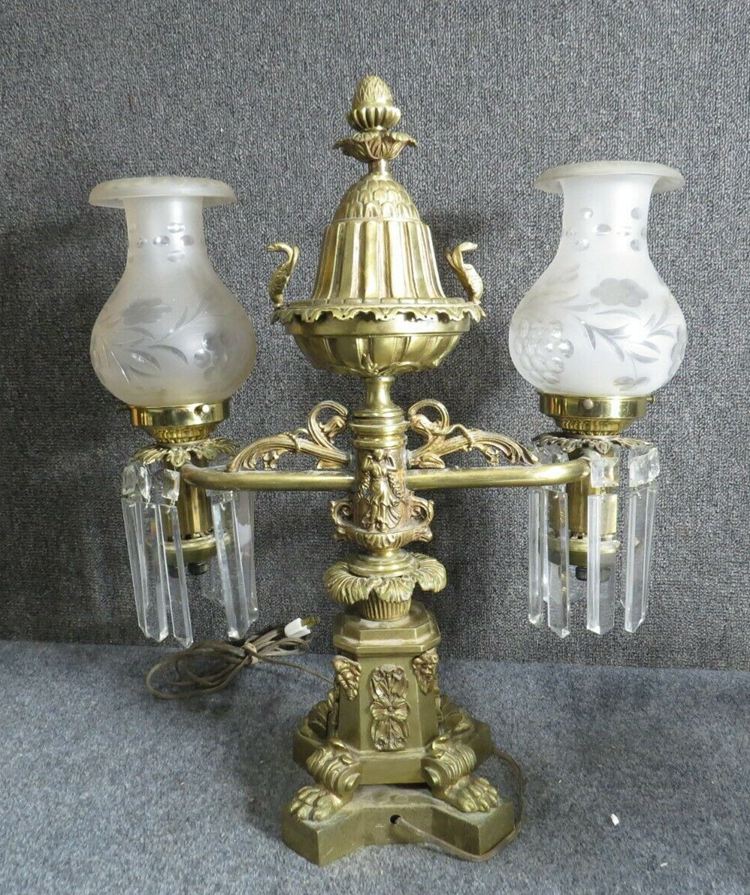
Argand lamps initially introduced in the 1780s and quickly rose to the top of the lamp market. They sparkled brilliantly and needed less upkeep.
An argand lamp can be identified by its distinctive wick mount, which is formed like a sleeve, and an oil container located directly above the burner.
Argand lamps are extremely desirable to antique collectors because they often date from the early 1800s. Prices should range from:
- Argand lamp 1820s, worth $885
- Argand lamps 1820s, worth $1,075.
Astral lamps
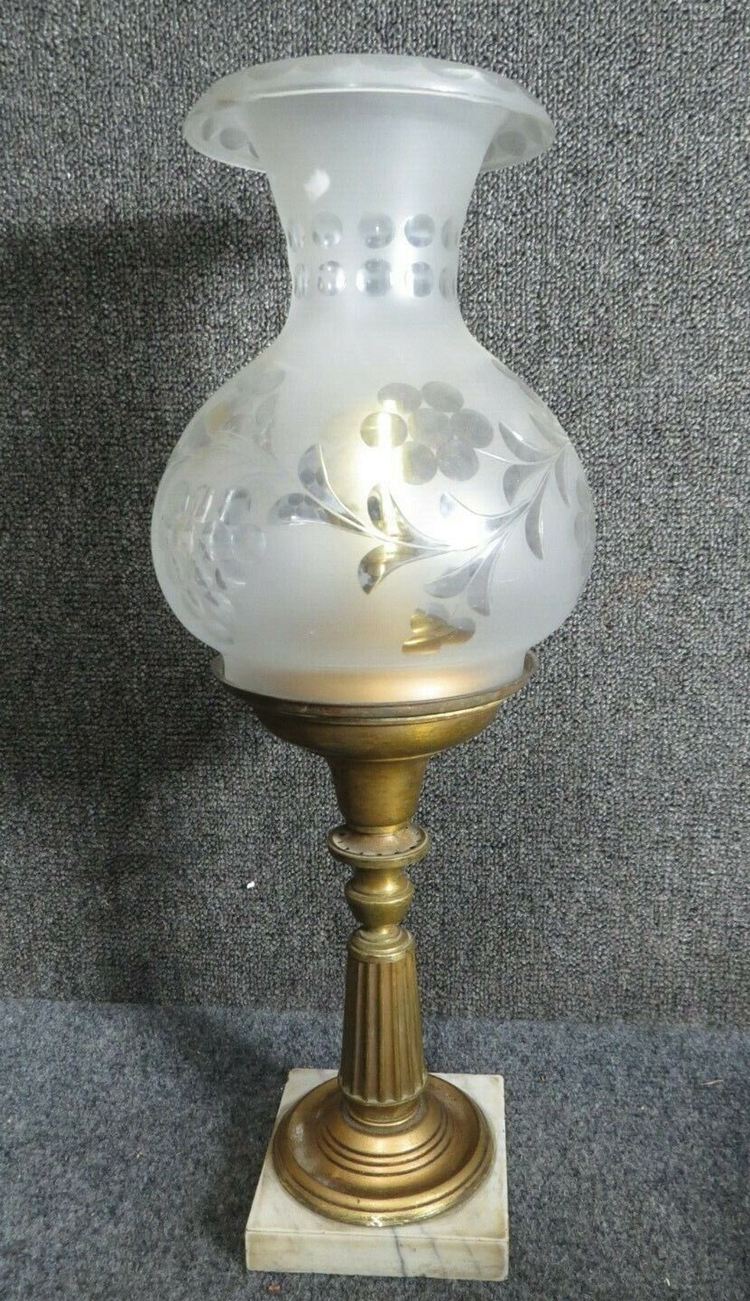
Argan lamps had been replaced by astral lamps. The lamp’s column, which is significantly longer and thinner, is the most noticeable alteration. Inside was a reservoir for an oil lamp.
Because the columns were constructed of bronze and brass the lamp could be more elaborately detailed and decorated. By chance, it also increased the worth of the lighting, such as
- Victorian Sinumbra Astral Lamp, costs for $1,650
- American classical bronze Astral Lamp costs for $1,495
A Guide for Identification of Antiques Lamps Value
Whether they are antique desk lamps or floor lamps, they are highly valuable due to their age. You should be aware, though, that a modern lamp with a lower value could be an antique lamp. There are several factors that affect an antique lamp’s value, including:
Material
The likelihood of the lamp being antique increases if the shades are made of glass or mica, though keep in mind that they can have been changed.
Typically, cast iron, brass, or bronze are used to make the arm and base of antique floor lamps. The appearance of the material can be deceiving because many lamps were coated to look like metal, and several of them were coated to seem like some other metals, notably gold.
Use your nail to peel any paint or surface layer from the underside of a concealed location of the lamp, or try using the point of a screw or nail instead. This will reveal the material your lamp is constructed of.
Antique lamps were frequently painted in various hues to mimic costly materials.
Examples include the employment of brown sheens to mimic copper or chrome hues to mimic silver. By lightly pressing the lamp’s bottom, you may determine whether it is genuine. To avoid unintentionally leaving scuff marks, choose a location that is concealed from view.
Condition
Like many antiques, its value increases with how well-preserved it is.
You should use a magnifier to look for any defects to your lamp, such as:
- Minor scuffs and scrapes,
- Maker’s label damage
- Ingrown cracks and chips
The lamp’s shade should be in perfect condition, much as the base. It should still be the same color and be free of cracks.
Make sure your electric lamp can switch on if it is one. To make sure the lamp turns on, it is frequently appropriate to fix connections.
Manufacturer
A lamp’s scarcity will substantially increase its price, especially if it was created by a renowned lamp maker. At auction, items made by the Handel Company, Dirk Van Erp Studio, and Tiffany Studios typically sell for the greatest prices.
Additionally, incredibly collectible lamps that are created in limited quantities or from materials that are unusual.
Age
Your antique lamp’s age is a key factor in determining its worth. Some of these lights were manufactured hundreds of years ago, but the manufacturing firms are no longer in business. Since these lamps are no longer produced, they become rare and command a high price.
Type
The different types of antique lamp will undoubtedly affect its value. Even though age is a significant aspect in assessing the value of any antique artifact, sometimes type takes precedence over age. Although not the earliest antique lamps, antique Tiffany lamps are the most valued and expensive antique lamp.
Accessories
With no light bulb, what is a lamp? It happens frequently that we overlook this crucial aspect. It’s true that not many antique lamps will have the original bulb, but if they do, you can bet your bottom dollar that they will sell for a pretty penny at auction.
Huge amounts of money can be paid for a single Edison or Weston bulb. They could be deemed precious when used with an original antique lamp.
Tips for Value
Try vintage discussion boards like TreasureNet What’s It Worth, a lively Subreddit forum. A lot of the time, enthusiasts are incredibly helpful and enjoy supporting one another.
Searching for comparable goods on auction sites like eBay’s collectible lighting and lamps category and Collectors Weekly’s selection of eye-catching auction items will give you a good estimate of what your item is valuable.
Where to buy these Antique Lamps Online?
Searching online is your best option if you need to find one immediately. Consider the following sites:
- e-Bay– The Antique Lamps of your dreams can be easily found on eBay, one of the greatest sites to find beautiful pieces of vintage furniture. It’s also ideal if you’re considering selling because they provide a very user-friendly e-commerce feature and can reach a sizable global audience.
- Ruby Lane– Since their auction stream is sourced via more conventional methods, Ruby Lane is, it must be said, a little more constrained in the number of antique lamps that are offered at once. It’s a good idea to constantly checking their inventory, though, as they are one of the biggest online auction houses, to see if they have what you’re searching for posted.
- Etsy– Since people frequently discover these different Antique Lamps in their grandparents’ homes across the nation, internet marketplaces like Etsy are among the greatest places to find a ton of these pieces on sale.
We suggest browsing Collectors Weekly, eBay, rubylane, antiquelampsupply for a variety of intriguing listings.
A nice location to start looking is Love Antiques’ section on basic lamps. This website features merchants in antiques as its sellers, and it is linked to antiques shows where purchasers and sellers can meet in person to trade antiques.
It’s worthwhile to keep an eye out for garage sales and thrift stores since you can find a lot of intriguing goods there for incredibly inexpensive prices. Consider all the possibilities underpriced antique lamps out there awaiting for you; it may be really exciting to find a valuable item for a low price!
Frequently Asked Questions
How do you recognize an antique lamp?
Snagging the lamp and inspecting the bottom for a manufacturer’s mark, name, or dating stamp. Additionally, check the lighting bulb itself; occasionally, a sticker with the name or the date of manufacture is included by the manufacturer.
How can you identify a mid-century lamp?
Simple lines and a playful space-age vibe are characteristics of antique Mid-Century Modern lamps. These lights are often geometric, with the most common shapes being spheres, crystal shards, and circles.
Our Takeaway!
If you just bought or are interested in purchasing an antique lamp. Alternatively, you stumbled onto an old lamp in the new estate’s basement. Whatever the circumstance, our guide on identifying and valuing antique lamps can help you determine how much they are worth. But if you want to know the whole worth and value of your antique lamp, we urge you to go see an expert appraiser.

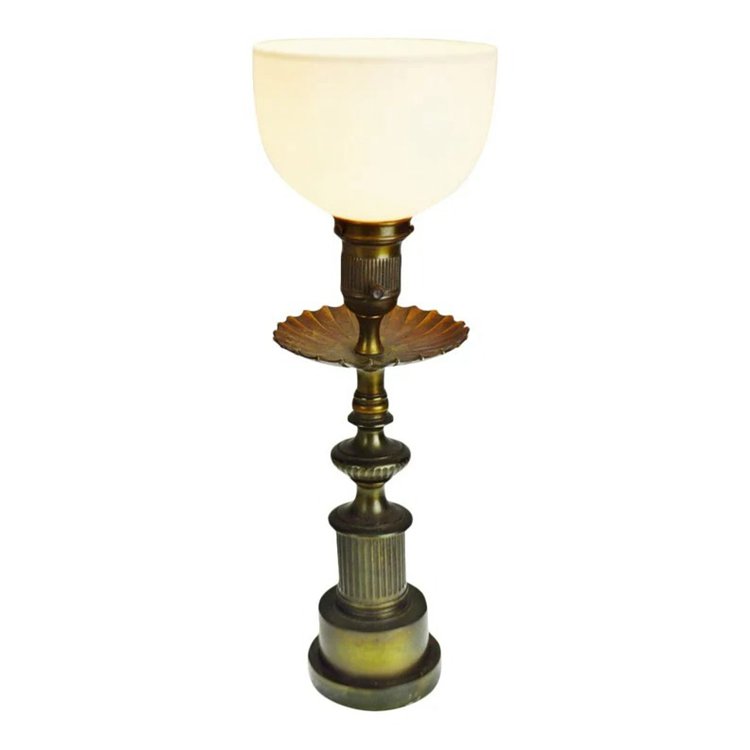
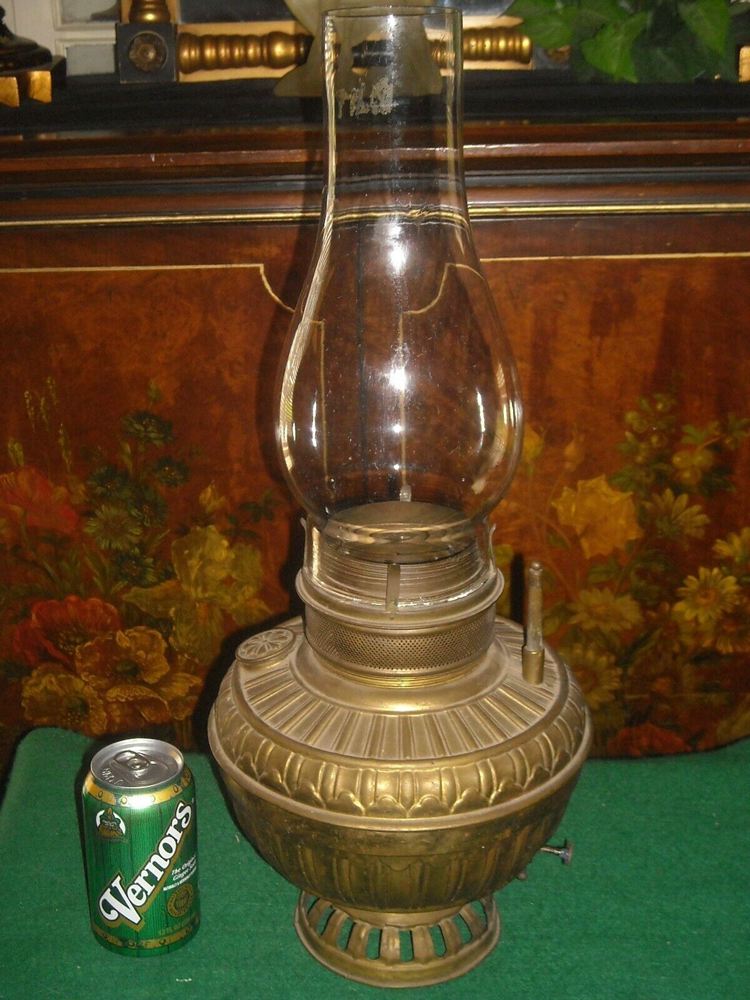




![Where To Sell Antique Furniture In 2022 [Ultimate Guide]](https://www.jacquelinestallone.com/wp-content/uploads/2022/09/Etsy-Your-Place-To-Buy-And-Sell-All-Things-Handmade-600x450.jpg)


